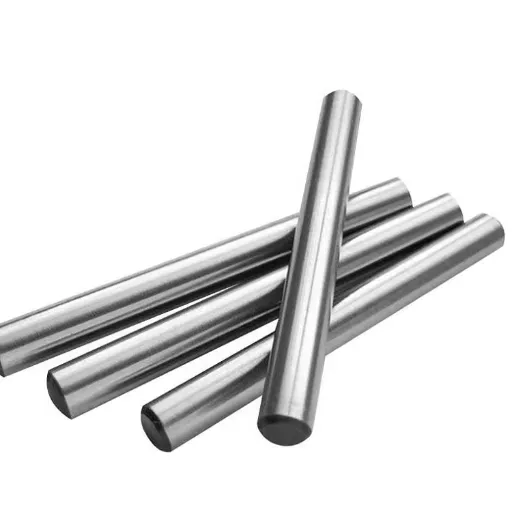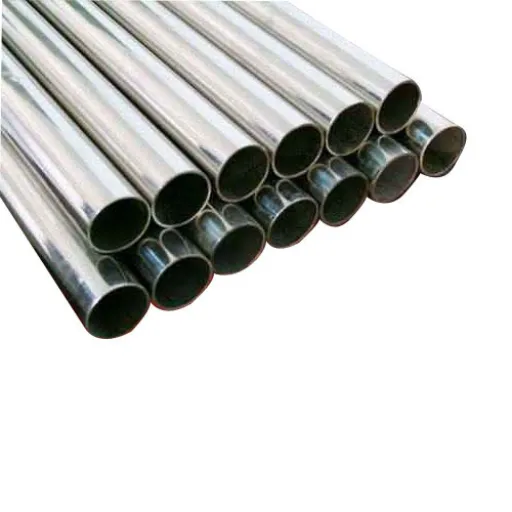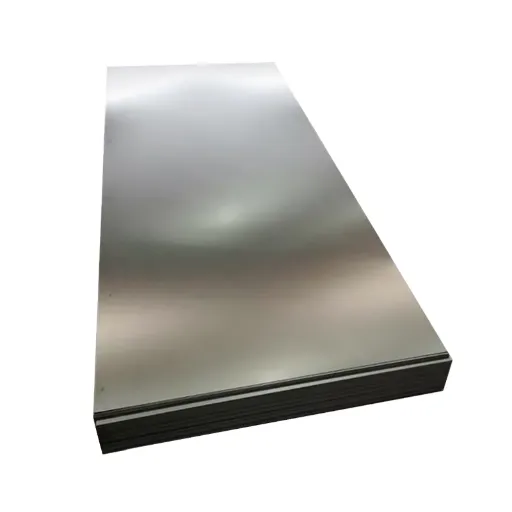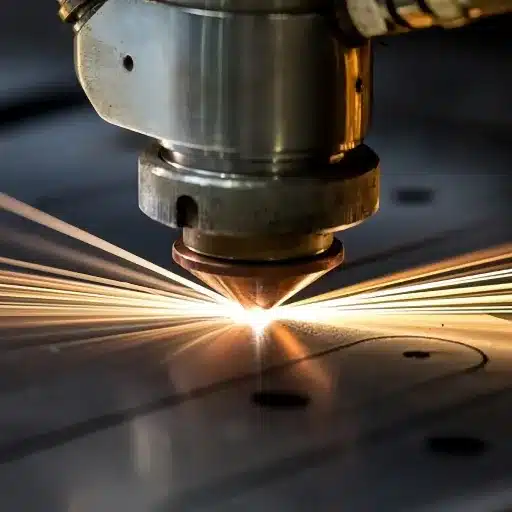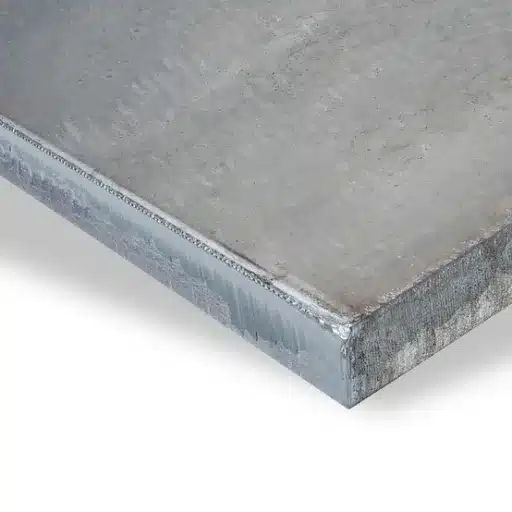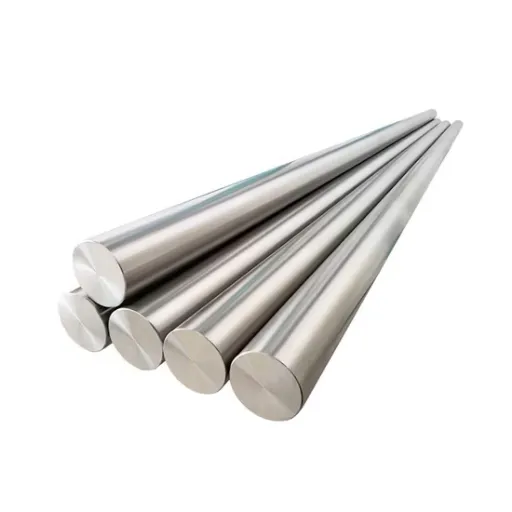Renowned as one of the most versatile materials, Monel alloy is known for its high strength and superb corrosion resistance, an attribute making it a critical industry material in aerospace and marine operations. But what makes Monel alloy so unique, and how did it earn its reputation as a go-to material for some of the most demanding environments? This article will touch on the long history of Monel, explain what is so unique about it in terms of its existence, describe its varied applications in modern industry, and will essentially open a small window onto such a unique piece with properties that are more than just electrical or thermal. This is a profound fascinating discussion about Monel for any material engineer, manufacturer, engineer, or random explore-r around fascinating engineering marvels that make up our world.
Understanding Monel Alloy
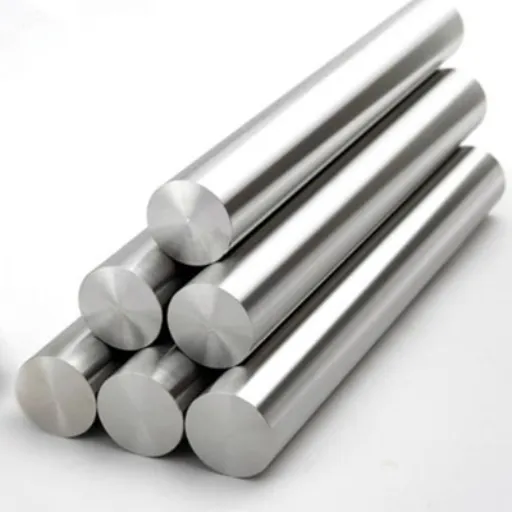
Composition of Monel Alloy
The primary constituent of Monel is nickel, showing variable amounts which range from 52% to 67%. The next most frequent component is copper, typically accounting for 28% to 34% of the composition. Also, Monel can contain tiny amounts of iron (up to 2.5%), manganese (up to 2%), silicon (up to 0.5%), and carbon (up to 0.3%). Together, these components impart great strength, corrosion resistance, and longevity to Monel.
Example: Monel 400, one of the most popular grades, typically contains around 63% nickel, 28%-34% copper, and some trace contents of the other elements. This grade especially comes with good resistance against seawater corrosion and high-temperature applications making it a popular choice in the fields of marine engineering, chemicals processing, and aerospace applications.
Mechanical properties of Monel
When using copper and nickel, Monel alloys offer high-performance mechanical properties that make them suitable for use in a variety of harsh industrial environments. The mechanical strength, toughness and resistance to deformation under mechanical stress, at even elevated temperatures, are most notable propensities among Monel alloy properties.
Monel strength levels are dependent on the type of Monel. The specimen for Monel 400 (which is mostly used) bears a typical tensile strength of between 70,000 and 85,000 psi (483–586 MPa). The yield strength is generally placed at 25 to 45 kpsi (172 kPa); the figures, of course, depend on the heat-treatment and manufacturing process applied. Monel 400 possesses good ductility. Its elongation at break is normally 20% to 35%.
Types of Monel Alloys
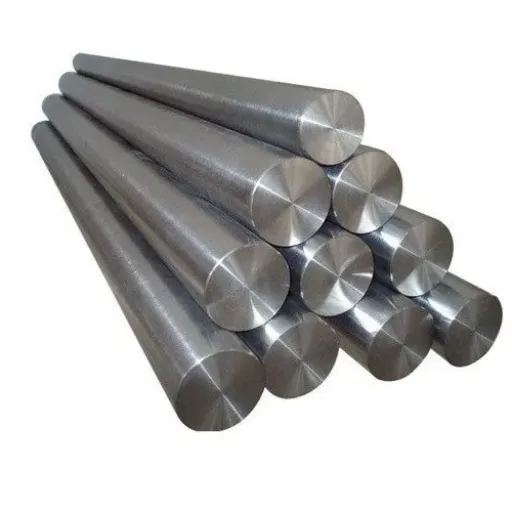
Overview of Different Monel Alloys
Monel 400
Monel 400 makes for a frequently used alloy and it consists of about 67% nickel and 23% copper, with minute amounts of iron, manganese, and other trace elements. It is known for its excellent corrosion resistance, especially in acidic and alkaline surroundings, coupled with its good mechanical properties. Key data are as follows:
- Tensile strength: 70,000 -85,000 psi [483-586 MPa]
- Yield strength: 25,000-45,000 psi [172-310 MPa]
- Elongation: 20-35%
Applications: Marine engineering, chemical and hydrocarbon processing, pump shafts, seawater valves.
Monel K-500
Monel K-500 is a precipitation-hardened version of the Monel 400, with an improved strength and hardness while maintaining the same excellent corrosion properties. The presence of aluminum and titanium allows the precipitation process, making this an even stronger alloy. Key features include:
- Tensile Strength: 110,000-160,000 psi (758-1,103 MPa)
- Yield Strength: 65,000-115,000 psi (448-793 MPa)
- Breaking Yield: 10–25%
Noteworthy features: Greater resistance to stress corrosion cracking and having better wear resistance as compared to Monel 400.
Different Use: Oil and gas field device, springs, bolts, pump shafting, and non-magnetic goods.
Monel Alloys vs. Stainless Steel
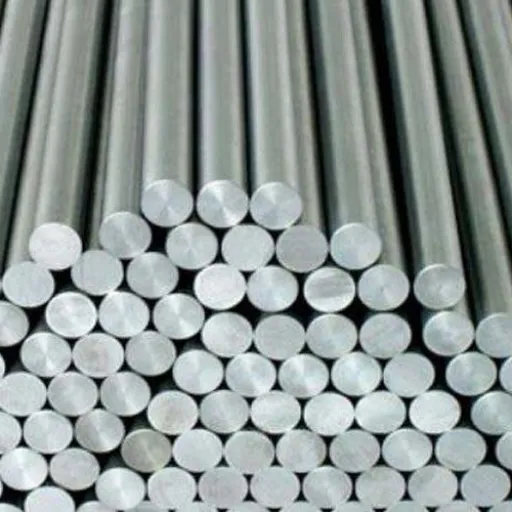
| Comparison Factor | Monel Alloys | Stainless Steel |
|---|---|---|
| Corrosion Resistance | Very good and typical corrosion resistance, especially in sea-water exposure, acids, and alkalies (Monel 400 and Monel 401) | Some resistance but subject to pitting and crevice corrosion in high chloride or marine environments unless specific grades like 316 or duplex stainless |
| Strength and Durability | Known for strength and ability to perform at extremities like high temperatures and adverse chemical environments | Strong but generally cannot match Monel for tensile strength and durability in high temperatures |
| Composition | Contains nickel (up to 67%), copper, iron, and manganese, offering heightened immunity against certain reagents | Primarily iron with varying amounts of chromium, nickel, and manganese; less applicable in harsher chemical environments |
Key Takeaway: While both materials offer valuable properties, Monel alloys generally provide superior performance in harsh marine and chemical environments compared to standard stainless steel grades.
Applications of Monel in Various Industries
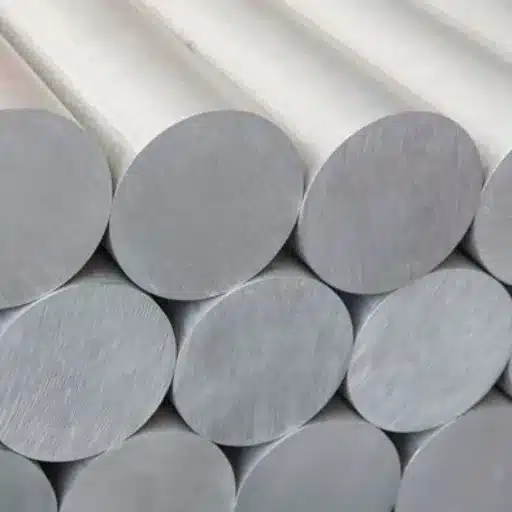
Marine Engineering Applications
Strength and corrosion-resistance properties of Monel are high enough for propeller shafts to become strong and last long against salty seawater throws. Take Monel 400 propeller shafts as an example. They will be able to retain their strength and withstand the harmful effects of prolonged exposure to high-pressure seawater systems.
Use of Monel K-500 in seawater valves and pump components has expanded immensely simply because corroding and pitting has given the material ninety-four thousand psi tensile, tensile strength a present generation free from maintenance for a new windfall of company profit during low operability in deep-sea marine environments.
Applications of Monel in Chemical Processing
The Monel alloys are very popular in the chemical industrial due to their fantastic resistance to corrosive environment. They really are the best choice for the equipment and pipes needed for harsh chemical conditions as they last harsh attacks by strong acids, alkali, and seawater. Monel 400 and K-500 are used in wells, kettles, and heaters dealing with hydrofluoric acid. Sulfuric and hydrochloric acid would require even more protection from high-temperature metals, considering that processs in acidic solutions are likely to be corrosive.
Performance Highlights
- Research shows that Monel 400 can operate satisfactorily up to 1,000°F (537°C)
- Displays excellent resistance to stress-corrosion cracking in fresh water and almost all industrial waters
- Pump parts made from Monel have a life expectancy up to 40% longer than basic steel counterparts
- Results in less downtime and lower replacement costs in handling hydrofluoric acid processes
Besides, Monel’s toughness is essential in plant uses like heat exchangers, tanks, reactors, and evaporators where strong chemical attack is unavoidable. Plant operators have reported that pump parts made from Monel have a life expectancy up to 40% longer than basic steel counterparts, looking for less downtime and lower replacement costs in handling hydrofluoric acid processes.
The Advantages of Monel Alloy
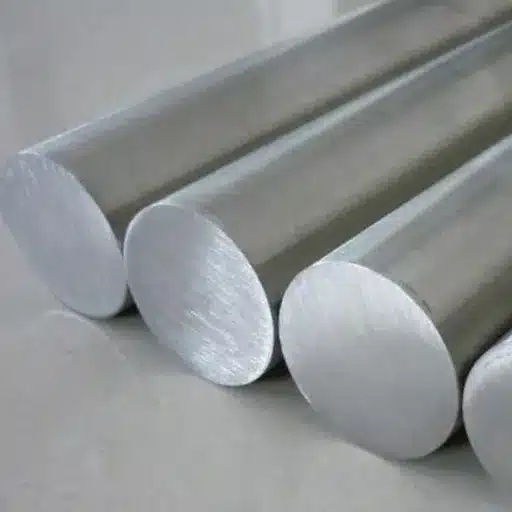
Corrosion Resistance Compared to Other Alloys
Monel alloy is well known for its extraordinary resistance to corrosion, far outstripping that which other alloys may offer against a variety of environmental backdrops. One of its major virtues is its resistance to both oxidizing and reducing agents, thus proving to be exceptionally useful in the handling of chemicals like hydrofluoric acid and sulfuric acid. Monel may outshine even stainless steel, which is quite vulnerable to pitting and crevice corrosion in chloride-rich settings. Monel performance is especially sure in marine applications.
Seawater Corrosion Rate
< 0.02 mm/year
Extremely resistant to seawater corrosion
Stress Corrosion Cracking
Barely Susceptible
Unlike brass and high-strength steels
In view of studies, there is evidence that Monel containing nickel maintains its structure under extremely harsh conditions. Monel is extremely resistant to seawater corrosion -under 0.02 mm/year- and barely susceptible to stress corrosion cracking which amounts to one of the principal failure modes for materials such as brass and high-strength steels. The consistency of its performance is of vital importance for industry applications, particularly in marine engineering where the alloy is subjected to fluctuating stresses and is an additional hindrance to other corrosive elements.
Strengths and Durability of Monel
According to what we have gathered, Monel alloys are known for their remarkable strength and endurance, making them the top choice for extensive industrial application areas. The tensile strength depends on 70,000 and 100,000 psi; thus, owing to this unique feature, the Monel maintains high resilience whenever subjected to high stress conditions. Strength is accompanied by a durability performance in extreme environments, specifically working at high pressure and temperature.
Corrosion resistance takes the cake with Monel having a corrosion resistance of excellent quality. Noteworthy examples have been monel’s high resistance to oxidizing and reducing chemicals, seawater, acids, and alkalis. To mention one, Monel 400 is one of the favored commercial grades that can operate anywhere from below zero up to 1,000°F without loss of suitability, thus ensuring a service life under even the most severe conditions.
Working with Monel Alloy
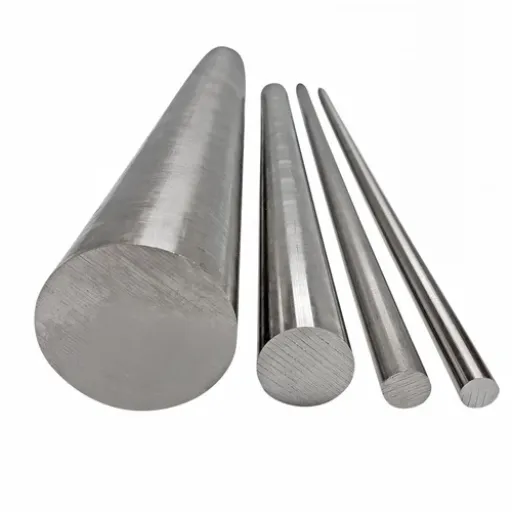
Fabrication Techniques for Monel
Welding Monel
Monel alloys can be effectively welded, but the success of welding depends on proper use of matching fillers. Monel 60 may be used. GTAW or GMAW are common techniques used for Monel applications. Industry sources report that preheating is usually not necessary for Monel, but post-weld cleaning is critical to protect against surface contamination.
Machining Monel
It requires special tools and techniques that arise due to its hardness and resistance to stress created deformation. For optimum perfection, tools made of carbide are recommended. According to test studies conducted by materials engineers, cutting speeds for Monel should be kept lower compared to speed of cutting most steels to better the tool wear and attain fine surface finishes.
Welding Monel Alloys
Welding process properly selected is crucial in the first place-The monel material normally receives welding by Gas Tungsten Arc Welding (GTAW) (TIG Welding), Shielded Metal Arc Welding (SMAW), etc. GTAW importance lies principally in its ability to provide utmost cleanliness and precise recasts, a requirement for the alloy to deliver and retain its most superior properties.
Another contributing element is the need for matching filler materials being expected to avoid such problems as cracking, poor joints, and so on. In some cases, it has been recommended in keeping with industry practice that one should use filler materials right fitting with the parent Monel metal, by matching filler materials like Monel 60 having high performances and service characteristics so as to definitely preserve the integrity of the welding scene.
⚠️ Critical Considerations
Pre-heat treatment and cooling rates after welding play a very crucial role in Monel’s welding. Typically, Monel alloys have a low thermal conductivity-thus, preheating is not mandatory. However, the joint must be kept free of contamination and clean. Endothermic sound cooling must also ensure the heat-affected zone does not crack. Such cracks can harm the quality of the weld.
Reference Sources
-
Wikipedia – Monel
This source explains Monel as a group of nickel-copper alloys with small amounts of iron, manganese, carbon, and silicon, highlighting its composition and properties.
Read more here -
ULMA Forge – What is Monel and What is it Used For?
This article describes Monel as a precipitation-hardened alloy, detailing its composition (65–70% nickel, 20% copper, and 5% other metals) and applications.
Read more here -
Metal Supermarkets – What Is Monel?
This source highlights Monel’s versatility, corrosion resistance, and durability, making it suitable for various industrial applications.
Read more here
Frequently Asked Questions (FAQs)
How Well Does Monel Metal Resist Corrosion?
Monel is extremely corrosion-resistant, particularly in marine and chemical processing environments, with a high resistance to flowing seawater and various chemicals, giving this material added appeal for application in tanks for water and fuel. Monel boasts better corrosion resistance than stainless steel in many corrosive hill environments.
What Mechanical Properties Does Monel Have?
Monel possesses excellent elongation properties: it is strong, tough, and ductile. It keeps its strength under substances at high temperatures and has a limited elongation property. Because of these properties, monel possesses practical applications in high-demanding industries such as valves, pumps, and marine hardware.
What Are Monel’s Common Applications?
Monel is used extensively in a number of applications and environments: marine hardware, chemical processing equipment, and oil and gas extraction. Its corrosive resistance is ideal for use in kitchen sinks, water tanks, and aerospace industry parts. Monel can offer versatility for use whenever high temperature tolerance and excellent durability in harsh environments are needed.
Summary
Monel alloy stands as a testament to engineering excellence, combining exceptional corrosion resistance, superior mechanical strength, and remarkable durability across extreme conditions. From marine propeller shafts to chemical processing equipment, this nickel-copper alloy continues to prove its worth in the most demanding industrial applications. Whether you’re considering Monel 400 for its versatile properties or Monel K-500 for its enhanced strength, understanding these alloys’ unique characteristics empowers better material selection for your specific needs.

